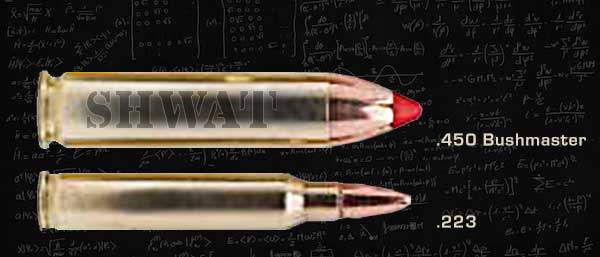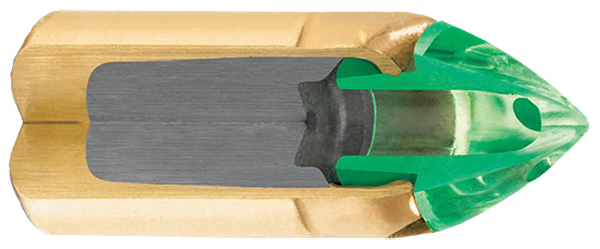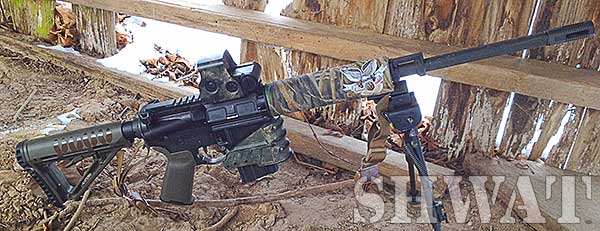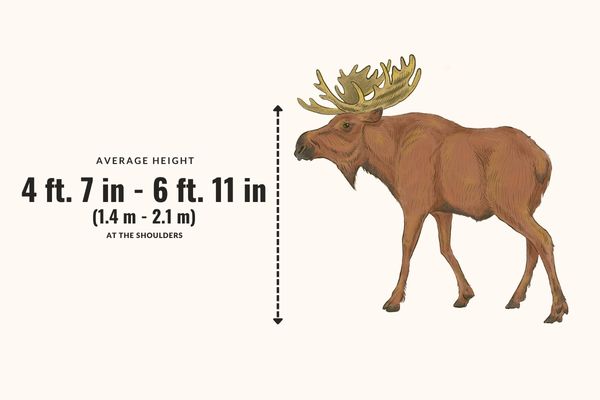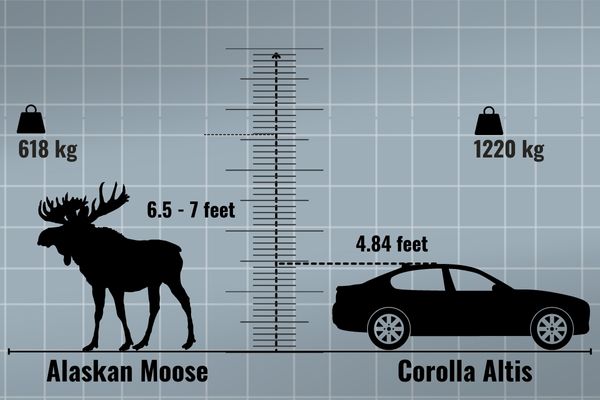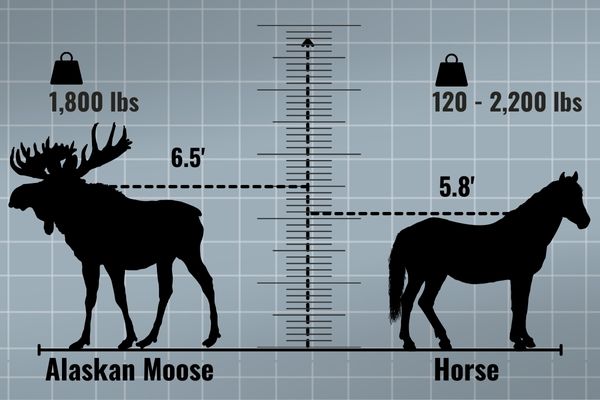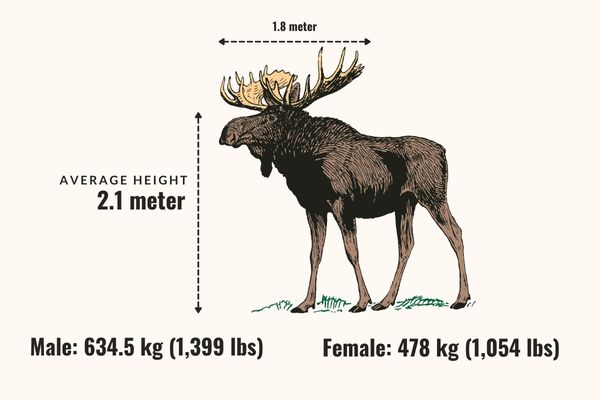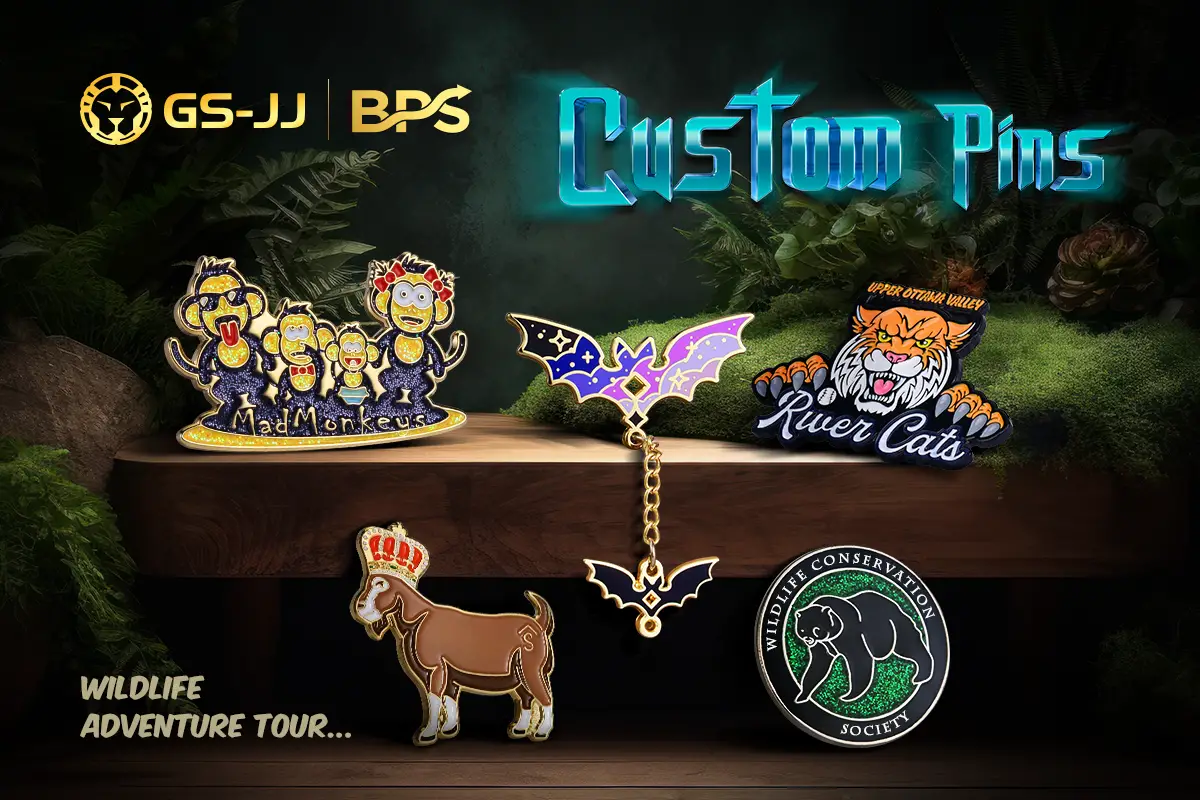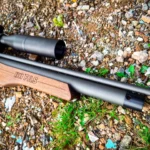Last updated on March 11th, 2024 at 02:49 am
 Are you looking for the best musky lures for 2024 summer musky fishing?
Are you looking for the best musky lures for 2024 summer musky fishing?
While it is impossible to say that any one single muskie lure is best, we luckily have many great options to choose from when out on the water. Below we will take a look at some of the top best musky lures of 2024, including the best musky lures for trolling, the best musky lures for summer, and the best musky lures for Lake St. Clair and really every musky-rich water body.
When the musky feeding window is open and the stars align, a giant muskie or pike will hit just about anything that moves. In those rare instances, your musky bait selection doesn’t really matter and all one needs to do is to be in the right place at the right time. If you are extremely lucky and dedicated to muskie fishing, you will experience this musky feeding-frenzy type of action once or twice a season.
The majority of your time spent muskie fishing for trophy pike and muskies, however, will be spent casting, cranking, and waiting. The right musky lure presentation will be the difference between a big bite and a follow-up. Therefore, you don’t want to spend all of your time and effort casting second-rate lures. Here is our selection of the best musky lures and northern pike fishing baits available on the market today.
Best Musky Lures 2024
1. Musky Innovations Bull Dawg – Best Musky Lures For 2024
 The Musky Innovations Bull Dawg musky lure is made of 100% soft plastic. This musky lure, which is balanced with a jig-like head, swims down in the water at a 45º angle on the descent and swims horizontal during the retrieve.
The Musky Innovations Bull Dawg musky lure is made of 100% soft plastic. This musky lure, which is balanced with a jig-like head, swims down in the water at a 45º angle on the descent and swims horizontal during the retrieve.
Bull Dawgs can be used as a jig, jerkbait, or a crankbait. While being retrieved, this musky lure rocks back and forth as it’s long curly tail waves frantically, a great combination that tends to drives large gamefish like muskie crazy.
We find this musky lure to be one of the most versatile and best muskie lures on the market today, and possibly the best musky lures for 2024.
Wondering what is the best musky net for the money?
2. Mepps Magnum Musky Killer Bucktail – Best Musky Lures For Summer
 Mepps Magnum Musky Killer is a tried and true favorite musky lure, specifically designed to catch and handle hogs. It’s no secret that BIG fish want to eat BIG baits, and the Mepps Magnum Musky Killer is among the biggest!
Mepps Magnum Musky Killer is a tried and true favorite musky lure, specifically designed to catch and handle hogs. It’s no secret that BIG fish want to eat BIG baits, and the Mepps Magnum Musky Killer is among the biggest!
We consider these to be the best musky lures for summer, especially in the bucktail variety. They are made with all the qualities and features that trophy muskie and pike fishermen look for in a big musky lure for summer. Features such as easy changability, like a heavy #7 solid brass blade allowing for maximum flash, heavy-duty premium VCM 5/0 cone cut treble hooks.
This classic muskie lure weighs in at 1 1/4 ozs. Bucktails are without a doubt one of the best musky lures for summer.
3. Lixada Fishing Lures 5-12″ Multi Jointed Life-Like Swimbait Hard CrankBaits – Best Selling Musky Lure
 These super life-like northern pike and muskie lures don’t carry a fancy brand name, which means they represent one of the best bangs for your bucks when it comes to musky lures. Lixada tends to be the best selling brand of these lures, however. These are also one of the best selling musky lures on Amazon.
These super life-like northern pike and muskie lures don’t carry a fancy brand name, which means they represent one of the best bangs for your bucks when it comes to musky lures. Lixada tends to be the best selling brand of these lures, however. These are also one of the best selling musky lures on Amazon.
These 5-12″ multi-jointed hard plastic musky baits are value priced and will be one of the best accessories in your musky tackle box. These muskie lures have a super realistic appearance and feature life-like swimming actions to provoke monster muskies to bite.
Features of these muskie lures include being 5-12 inches in length divided into 8-segments, double 3 set treble hooks, life-like 3D eyes, high resolution, laser sharp body detail, and a durable ABS hard plastic material ensuring long service life.
These are definitely one of the best musky lures under $25. Their low price makes them one of the best musky lures for sale.
4. Jointed Believer – Best Musky Lures For Trolling
The Jointed Believer is our top pick for the best musky lures for trolling. There are two makers of these style of musky baits that we recommend: Musky Mania and Drifter Tackle. Either one should serve you well when trolling for musky.
Musky Mania Super Believer
 The Musky Mania Super Believer is a medium running plastic bait with a live action tail crankbait. The live action tail is a replaceable soft plastic.
The Musky Mania Super Believer is a medium running plastic bait with a live action tail crankbait. The live action tail is a replaceable soft plastic.
The flash and swimming action created by the long tail, especially while trolling, gives a life-like presentation to muskies that simply cannot be duplicated by older, more conventional crankbaits. The Super Believer trolls and casts equally well, while running 12′ while trolling and 2′-6′ when casting.
Drifter Tackle Jointed Believer

The Drifter Tackle Jointed Believer musky lure is one of the most versatile musky baits on the market. It’s shallow and deep eyelet, along with its unique design and shape, enable this musky lure to be fished from topwater down to depths of 20 feet.
For fishing over thick weeds, you can retrieve this lure slowly as a topwater bait. For lighter weeds, you can use it as a twitch bait or jerk bait. You can also cast it into timber, rocks, and heavier cover working it as a crankbait.
Because this lure continues to consistently produce fish, we rank it and the one mentioned above it as the best musky lures for trolling. It has an erratic and unique action which triggers musky strikes from fish that have been presented with everything.
Need a pair of the best musky release gloves?
5. Musky Double Cowgirl Bait – Best Musky Lures For Beginners

The Musky Double Cowgirl bait by Musky Mayhem is a classic and very popular big muskie lure. Being one of the easiest musky baits to fish with, we consider these to be the best musky lures for beginners.
While it is similar to the Mepps bucktail mentioned earlier, it does differ in several ways. This muskie bait has two huge #10 spinner blades which create a large amount vibration in the water. The lure’s Flashabou skirting gives it life-like action, a larger profile, and excellent color.
Many would argue that this is the best inline spinner available, because of it’s baitfish simulating action. Being that it easy to work, can be fished in just about any conditions or terrain, is well known to produce huge musky, this is our choice for best musky lure for beginners.
6. Whopper Plopper – Best Topwater Musky Lures
 The famous Whopper Plopper is our top choice for the best topwater musky lures.
The famous Whopper Plopper is our top choice for the best topwater musky lures.
The original River2Sea Whopper Plopper was designed by legendary fisherman and television personality, Larry Dahlberg. This topwater musky bait produces a sputtering surface disruption that is begging to be smashed by muskies. While it was originally created to catch musky, Dahlberg and others soon realized that bass were also highly attracted to this bait. Therefore, smaller versions were devised for bass fishermen.
You can work the Whopper Plopper super slow, so you barely hear the tail, only the tiny beads sizzling inside of it. Or, you can speed things up so the lure throws water like a flailing wounded fish. Either way has proven extremely effective.
On calm water days, it is best to run this topwater musky lure slow, as it won’t take much action to draw a muskies attention. On the other hand, during rough waters, speed up your retrieve in order to stand out among the natural water movements.
This surface musky lure casts a mile, and your ability to fish it at a wide range of speeds, makes it a deadly tool for catching musky. The River2Sea Whopper Plopper’s spinning tail is perfectly tuned right out of the box, and it is available in a variety of sizes and colors.
7. Suick Musky Thriller – Best Wooden Musky Lures

Back in the day, the original musky lures were made buy guides. The more successful the guide was, the higher prices they could charge for their services.
The first company to successfully make muskie lures that worked for musky exceptionally well was the Suick Lure Company with their “Suick Musky Thriller”, which is for sure one of the best old musky lures. The lure comes in 4”, 7”, 9”, and 10” sizes. Suick Lure Company is still in business today, so they can be ordered and this should be a staple in your musky tackle box.
Now if you study these musky baits you will notice that at the back end is a piece of metal similar to a tail. Here is a little muskie secret that you will learn only here at TigerMuskie.net that your guide will not tell you. Simply put, that metal is adjustable for changing conditions. A lot of anglers just take a lure out of the box and snap it on the end of their line and off they go. The proper way to use muskie lures that have adjustable parts is to test them out first, before you go out fishing. Make sure it is performing how it should be, and that only comes with practice and knowledge that you will gain here.
With the Suick Musky Thriller, we recommend making a slight upside down v-shape with the metal tail. Only bend the tail about 1/8th of an inch on each side. This very subtle adjust will provide much better action out of this lure, and thus produce more fish. Suicks are still definitely the best wooden musky lures.
8. Savage Gear 3D Suicide Duck

The Savage Gear 3D Suicide Duck is an amazing muskie lure that acts just like a retreating duckling making it perfect to be swallowed up by a giant muskie. This hard plastic musky lure can be fished with either long pulls or steady retrieves, slow or fast, and looks just like a real duckling!
The Savage Gear 3D Suicide Duck is conveniently designed to include both a bottom and top hook hanger, which allows you to customize the lure’s presentation based upon current conditions.
Given the lifelike features of the 3D Savage Gear Suicide Duck, it’s no surprise that it was the winner in the Hard Bait category at the 2016 ICAST event.
9. Chasebaits The Ultimate Squid Fishing Lure – Newest Musky Lures

We know what you are thinking. “What the heck is that thing?” Well, this is Chasebaits The Ultimate Squid, one of the newest musky lures on the market. Now, before you jump out of your boat, hear us out.
You might be wondering why on earth would a musky want to eat a squid, when there are no squids in fresh water. We challenge you to pose this question to anglers on Lake Michigan who have been using squid baits for years to catch giant salmon and trout on the Great Lake. The truth is, squid baits have proven to be extremely effective, even for freshwater fish.
The Chasebaits Ultimate Squid is by far the most realistic looking and life-like squid baits we have ever seen. These newest musky lures have the potential to catch massive musky. Only time will tell for sure just how effective they will be, but we highly encourage you to give them a shot.
These are definitely one of the coolest new musky lures that we have seen. Their relatively low price also makes them absolutely worth trying.
10. Cisco Kid Topper

As mentioned above, Suick has been making musky lures for decades. The Cisco Kid Topper is one of their newer, topwater musky baits.
The Suick Cisco Kid Topper looks like a little torpedo and it’s nose and tail features stainless steel propeller blades which create a large topwater disturbance which really gets the attention of any muskies in the area. This great muskie lure can be used at a fast or medium speed to keep the blades spinning properly.
When it comes to the best topwater muskie lures, this is one of our favorites.
Live Bait Musky Rigs
 The old standby for musky fishing is the use of live bait. However, usng live bait musky rigs for fishing presents its own unique set of problems. One of them it that purchasing live bait can be very expensive. Live suckers which are in the 6” range and larger can cost upwards of ten dollars each or more.
The old standby for musky fishing is the use of live bait. However, usng live bait musky rigs for fishing presents its own unique set of problems. One of them it that purchasing live bait can be very expensive. Live suckers which are in the 6” range and larger can cost upwards of ten dollars each or more.
Then there is the problem of keeping them fresh. In order to do that, another container must be brought into the boat, such as a five gallon bucket or a Frabill Magnum Bait Station. The larger the bait fish, the less you can carry on board or you will need a larger container. The inherent issue here is to be able to oxygenate the water to keep them alive. The more you have in the bucket, the more oxygen you’ll need to add to the water. The Frabill live well just mentioned comes with an aerator. However, if your bait station does not come with an aerator, you’ll need to pick one up. While musky lures are reusable, suckers are not.
It’s also critical that you select and use a proper live bait musky rig. Not only do you want to make sure that your expensive bait doesn’t get off, but more importantly you want to be sure that you are minimizing the chances of injuring any muskies.
You also have to ask yourself, is the live bait I am using natural bait to the water I’m fishing in? This is not to say that a muskie will not strike at any live bait presentation, but they will strike more frequently to natural bait found in the lake that you are fishing in.
Yes they work, and there are many different hooks, live bait musky rigs, and techniques of how to apply them to the end of your line. We recommend that you watch quite a few YouTube videos of how to properly rig a sucker, or hire a guide for a day to show you how to do live bait musky fishing.
Musky Lures Buyer’s Guide
When it comes to musky lures, there is no shortage of different jigs, swimbaits, crankbaits, and more available to musky fishermen. Musky baits come in all different actions, shapes, sizes, and weights. Some lures are easier to work than others, but when worked properly, each can be very effective.
Musky Lure Types
Over the past 20 years or so the number of different types of musky lures has grown substantially. Thanks to the invention of new materials and manufacturing processes, musky fishermen have been blessed (or perhaps cursed) with a plethora of options. The trend has been towards bigger and bigger musky lures.
There are so many different musky lure types and styles that we can’t possibly cover them all here. But let us take a look at some of the the most popular musky lure types.
Glide Baits
Glide baits can be one of the most effective musky lures any time of year, but they can also be one the hardest lures to work properly. Depending on your preferred style, glide baits can be retrieved fast and erratic or with a slow side-to-side action. We recommend practicing both. There are a lot of styles of musky glide baits, so try out a few different models that you can work properly and like the action of. Learning to properly work the best glide baits takes a lot of practice, but knowing how to do so is crucial if you want to catch more muskies.
Soft Plastics
Despite the fact that most soft plastic musky lures don’t resemble actual fish, they remain arguably the best musky lures of modern day. The reason for this is simple: they consistently catch musky.
Soft plastic musky baits can be cast and retrieved in a multitude of different styles, depending on the the angler and the mood of the fish. Typically, however, soft plastic musky lures are most often retrieved with a “pull, reel in the line slack, pull again” fashion. This manner of retrieve, with the rise and fall action of the bait, resembles an injured or dying baitfish. Nearby muskies will often try to take advantage of an easy meal, which a soft plastic lure can seem to be.
Perhaps the two most popular of soft plastic musky baits are the Bull Dawg and Medussa. There have been some clones of these lures come to market in recent years, and they may work equally as well for less money.
Topwaters
Topwater musky strikes are some of the most invigorating and memorable hits to watch. Once the water of the summer has warmed up, topwater musky lures work like a charm, if you know how to properly work them.
Two very popular topwater musky bait styles are Whopper Ploppers and “walk-the-dog” topwater baits. Whopper Ploppers are very easy to work, and can be very effective with a straight retrieve. On the other hand, “walk-the-dog” musky lures require some practice. These lures need to be retrieved in a side-to-side fashion with as little hesitation in-between pulls as possible, in order to be effective.
Bucktails & Spinners
Bucktails have historically been the most popular lures used by musky fishermen. What makes bucktails so great and effective is that they produce vibrations in the water pattern that a musky can easily feel. Getting the fish’s attention from a distance and triggering it’s bite response are huge advantages to bucktails.
Bucktails can be cast and retrieved at any rate of speed, dependent upon the angler and the conditions. Bucktails come with various size blades, but some of the most popular and effective ones have double 9 and double 10 blades. Musky Mayhem, Llugen Lures, and Mepps are just a few of the companies making some of the best bucktails for musky fishing today.
Warranty
Warranty of musky lures is generally a non issue. Your musky lure is not likely to simply break, or not work, like an electronic device would. Also, musky lures are subject to a lot of abuse, so you would have a difficult time proving to a manufacturer that their lure just broke on it’s own. That being said, if you do experience a problem with a lure, we suggest contacting the manufacturer. Most reputable companies will do what they can to keep you as a happy customer.
You are unlikely to ever need to file a warranty claim with a musky lure. The biggest cause of lose or damage to musky lures comes from getting snagged on rocks or other hidden debris. Nobody likes to lose a $30 lure, but it is an unfortunate part of the sport.
Price
Musky lures are not cheap. If you are new to the sport, you may be shocked to see just how expensive some baits are. On the extreme low end, cheap musky lures can be had for $4-$5. On the high end, you can expect to pay in the $20-$30 range. Custom musky lures from smaller makers can even be in the $50-$100 range.
Unlike a lot of things where higher price can often mean better performance or production, that isn’t necessarily the case with musky lures. A $100 custom lure won’t catch you any more fish than a $15 lure. We would suggest starting with the lower priced lures in the $10-$20 range. As you advance in your skills, you can consider investing in some more expensive musky lures.
Where To Buy
You can buy musky lures at most major big box sporting good stores. However, depending upon your location, the selection may be quite limited. These retailers also have higher markup on their lures, so unless you come across a sale, we don’t recommend paying full retail at a big box store for your musky lures.
Online market places such as Amazon offer a good selection of musky lures at very fair prices. You also can’t beat their customer service and return policy. Facebook musky groups and Craigslist are also good places to get custom or used musky lures at solid deals.
One last place to buy musky lures on sale is musky expos and conventions. These sports shows usually have all of the manufacturers there, both large and small, and you can often get really good deals on musky lures while at the show.
Best Musky Lures Of All Time
Musky lures have certainly evolved quite a bit over the years. From the first musky lures that were handmade, and usually made and sold by fishing guides, who sold them to their customers and local bait shops, to today’s modern musky lures made of high quality plastics and polymers. Some of the best musky lures of all time were copied from those original hand-made guide baits.
Today, some are still handmade, but mostly made by large companies like Rapala and Mepp’s to name a few. It was those first fishing guides who spent hours and hours on the water, studying the habitat, the structure, the shorelines, and water conditions, which provided the basis for their crafting of muskie lures that mimicked the natural baits in the water.
Conclusion
When you are muskie fishing, you are going to have to make a choice as far as what types of muskie lures to put on the end of your line. You have to think about what you are going to put in front of that trophy musky. If you want to get the fish to strike at your presentation, and then get it into the boat, then you are going to need to have a complete musky fishing package. That means the rod, the reel, the line, the knot you tie, the swivels, the musky baits, the leader, the net, and the boat you are using, which are all contributing factors to whether you will be successful or not. Over time you’ll develop an expertise in the proper selection of each and every one of these pieces or musky tackle. These will be the tools of your trade. The tools you’ll use to hone your craft. And that trophy fish won’t be far behind. What we are saying is that yes, lure selection is extremely important, but don’t neglect all of the other aspects of what it takes to land a giant musky.
We have just covered a few of the old tried and true best musky lures of all time. During your musky fishing lifetime you will run across many more musky lures and new innovations. The key to success is to keep trying new things, in addition to learning how to effectively use each of the baits that you already have.
We hope you have found our musky lure buying guide to be helpful. Check back often for updates to our list of the best musky lures.
Best Muskie Lures Comparison



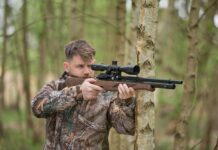






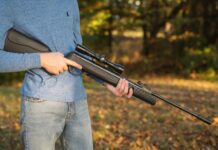





































 Are you looking for the best musky lures for 2024 summer musky fishing?
Are you looking for the best musky lures for 2024 summer musky fishing? The Musky Innovations Bull Dawg musky lure is made of 100% soft plastic. This musky lure, which is balanced with a jig-like head, swims down in the water at a 45º angle on the descent and swims horizontal during the retrieve.
The Musky Innovations Bull Dawg musky lure is made of 100% soft plastic. This musky lure, which is balanced with a jig-like head, swims down in the water at a 45º angle on the descent and swims horizontal during the retrieve. Mepps Magnum Musky Killer is a tried and true favorite musky lure, specifically designed to catch and handle hogs. It’s no secret that BIG fish want to eat BIG baits, and the Mepps Magnum Musky Killer is among the biggest!
Mepps Magnum Musky Killer is a tried and true favorite musky lure, specifically designed to catch and handle hogs. It’s no secret that BIG fish want to eat BIG baits, and the Mepps Magnum Musky Killer is among the biggest! These super life-like northern pike and muskie lures don’t carry a fancy brand name, which means they represent one of the best bangs for your bucks when it comes to musky lures. Lixada tends to be the best selling brand of these lures, however. These are also one of the best selling musky lures on Amazon.
These super life-like northern pike and muskie lures don’t carry a fancy brand name, which means they represent one of the best bangs for your bucks when it comes to musky lures. Lixada tends to be the best selling brand of these lures, however. These are also one of the best selling musky lures on Amazon. The Musky Mania Super Believer is a medium running plastic bait with a live action tail crankbait. The live action tail is a replaceable soft plastic.
The Musky Mania Super Believer is a medium running plastic bait with a live action tail crankbait. The live action tail is a replaceable soft plastic.

 The famous Whopper Plopper is our top choice for the best topwater musky lures.
The famous Whopper Plopper is our top choice for the best topwater musky lures.



 The old standby for musky fishing is the use of live bait. However, usng live bait musky rigs for fishing presents its own unique set of problems. One of them it that purchasing live bait can be very expensive. Live suckers which are in the 6” range and larger can cost upwards of ten dollars each or more.
The old standby for musky fishing is the use of live bait. However, usng live bait musky rigs for fishing presents its own unique set of problems. One of them it that purchasing live bait can be very expensive. Live suckers which are in the 6” range and larger can cost upwards of ten dollars each or more.